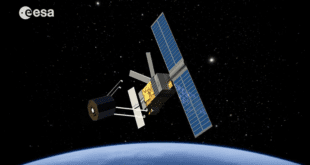by Jose Salgado
One of the reasons why space is rapidly attracting new investments is because of its potential to enable new applications for several non-space industries, health, communications, fintech, agriculture, oil & gas, and even art, just to name some examples.
As the space markets continue to develop, leaders of traditional space companies need to realize that they are facing opportunities that the space industry alone can not seize.
According to the Ideas for Leaders site, “cross-industry collaborations can combine and ‘reconfigure’ existing technologies and lead to the development of new ‘applications’. Their success, however, depends on more than a culture of enterprise and a commitment to innovation at the ‘partnership’ companies. Procedural and organizational factors can make or break interindustry product development.”

This is a challenge for the space industry which currently lacks diversity. “While I am impressed and inspired by the generations that have come before me, I recognize that space isn’t nearly diverse enough. We need to diversify the types of people that start space companies, work within the industry, and are staffed at relevant governmental agencies.”, says Jonathan Lacoste, founder of Space VC fund.
Those that have expertise in “intersection industries,” such as semiconductor manufacturing, software development, data architecture, or pharmaceutical & drug development, will continue to provide critical competencies to the growing space ecosystem.
Lacoste’s newly created Space VC fund has already announced two investments, with a couple more soon to be announced. Cosmic Shielding Corporation, the leading space technology company for multifunctional radiation solutions and SpaceX were the fund’s first investments.
The fund’s main considerations for investing in a company are the diverse set of skills of the CEO and management team, a clear vision, and a large total addressable market. “I personally like to see dual-use applications that already have commercial traction,” adds Jonathan.
Even during Covid times, the space sector recorded $5.7 billion in investments for the first quarter of 2021, a 356% increase from the $1.2 billion in the same period last year according to Quilty Analytics. This includes the latest special purpose acquisition company or SPACs that are a good financial instrument when combined with a mature company and realistic valuation.
Speaking of growing the space sector, Public-Private partnerships continue to be an underexplored model for the space sector. Some of these examples are the Japanese navigation system QZSS and launch vehicle GX, the European navigation system Galileo and the U.S. launch vehicles EELVs.
Jonathan Lacoste agrees: “We need a faster regulatory partnership between the private and public sectors. Innovation often outpaces any government’s ability to craft legislation, and that’s certainly true in space.”

Jose Salgado is a space industry commercial consultant and founder of D-Construct Space. www.dconstruct.space
 SpaceWatch.Global An independent perspective on space
SpaceWatch.Global An independent perspective on space




